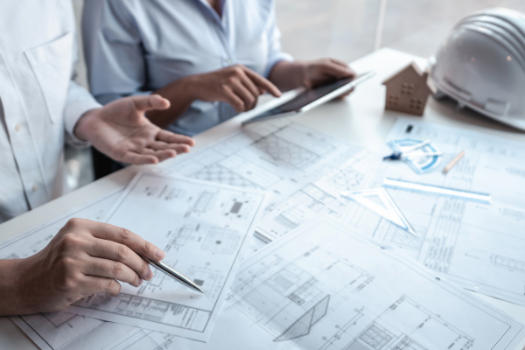
The ROI of Early-Stage Cost Modeling in BIM
Every contractor and project owner wants the same thing—no surprises. But construction projects still go over budget. A big reason? Cost planning starts too late.
Early-stage cost modeling in BIM changes that. It brings clarity to your budget before the first brick is laid. You get better cost forecasts, fewer change orders, and stronger profit margins.
In this article, we’ll break down how early BIM cost modeling works—and why the return on investment (ROI) is worth every dollar.

What Is Early-Stage Cost Modeling in BIM?
Think of early-stage cost modeling as building a budget while you're still designing the project.
Using a BIM (Building Information Modeling) platform, you can attach cost data to early models—even if the design isn’t fully complete. That means you can test different design ideas and see how they affect the budget.
This isn't just about drawings. It's about using data to guide smarter financial decisions before construction starts.
And because it’s model-based, any changes in geometry, materials, or systems update the cost in real time. This saves hours of back-and-forth later and gives everyone a clearer path forward.
The ROI: Why It Pays Off to Model Costs Early
Let’s talk return on investment. Why is early cost modeling worth it?
Here’s what you gain:
Fewer surprises: You catch cost problems before they show up on-site.
Faster decisions: Owners see real-time cost impacts as design evolves.
Stronger bids: Contractors price jobs with more confidence and less guesswork.
Fewer RFIs and change orders: Clearer scope means less backtracking during build.

Early cost modeling often cuts estimating time by 30–50%. It also reduces budget overruns by helping teams stick closer to the original plan.
In short: You spend less time fixing mistakes and more time doing actual work.
For firms using platforms like BidLight, this process is seamless. You get a live connection between your design and your dollars—helping your team move faster and smarter.
How It Works in Real Projects
Let’s say you’re in early design on a mixed-use building. The architect is deciding between two HVAC systems. One is cheaper to install. The other has better energy savings.
Instead of guessing, you load both options into your BIM model. The cost data updates in real-time. You see the short-term and long-term impact instantly.

Or imagine the owner wants to swap materials. No problem. With early-stage modeling, you don’t need a full re-estimate. The model updates the costs and quantities automatically.
This helps everyone—from architects to estimators to owners—stay aligned from day one. It’s a smoother handoff between design, estimating, and build teams.
You get better control, faster answers, and fewer late-stage headaches.
Common Mistakes Without Early Modeling
Skipping early-stage cost modeling might save time upfront—but it costs more later.
Here’s what often goes wrong:
- Design decisions made in a vacuum
- Estimates based on outdated or incomplete drawings
- Late-stage changes causing budget spikes
- Scope misalignment between teams

When estimating starts too late, there’s no room to adjust. The team gets stuck fixing problems that could’ve been avoided. It leads to friction, missed deadlines, and unhappy clients.
With early cost modeling, you bring the budget into the design room. That alone can prevent half the issues that derail timelines.
What Should Be in Your Cost Model?
An early-stage cost model doesn’t need every detail—but it does need the right pieces. Here’s what to include:
- Model elements tied to real cost items (structure, systems, finishes)
- Quantities and materials from BIM geometry
- Unit pricing pulled from reliable data
- Scenarios or options to test design choices
Your model should evolve with the design. Start rough, then refine. The goal is to support good decisions early—not just to get an exact number.
BidLight makes this easier by connecting your model with cost libraries and visual outputs. That means less guesswork, more insight.
Final Payoff: Better Projects, Better Margins
The real ROI of early-stage BIM cost modeling isn’t just about saving money. It’s about confidence.
You know your numbers. Your team makes smarter calls. Your clients trust your process.
That turns into better margins, fewer disputes, and repeat work.
When you model early, you don’t just react to problems—you prevent them. That’s a powerful edge in a tight market.
If you want to build smarter and bid with confidence, early cost modeling isn’t optional anymore—it’s essential.
Conclusion: Start Early, Win More
Early-stage cost modeling in BIM isn’t a luxury. It’s a competitive advantage.
With BidLight, you can bring cost clarity to every stage of the project—before mistakes happen.
Start early. Stay on budget. Deliver with confidence.